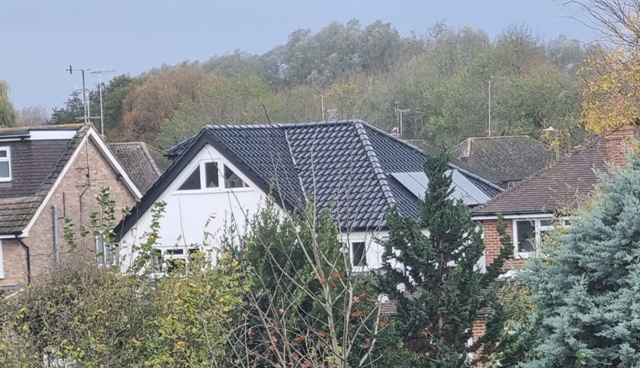
Argonne study says roof’s material cool the outside air and lower energy demand
LEMONT, Ill.–(BUSINESS WIRE)–With increasingly warming temperatures during the summer months, urban cities like Chicago need to arm decision makers and communities with information about strategies to help keep their residents cool. One strategy involves something all buildings already have: a roof. Certain roofing materials can help cool the surrounding outside air and decrease the need for air conditioning (AC).
To help understand how climate is affecting urban communities, researchers at the U.S. Department of Energy’s Argonne National Laboratory examined three different types of roofing strategies and their impact on near-surface temperature and cooling energy demand through regional modeling in the Chicago metropolitan area.
The team ran a regional climate model simulating the Chicago metro area and three types of roofs: cool (painted a heat-reflecting white), green (vegetation), and solar panels.
They found that the three types of roofs reduced the near-surface temperature and AC consumption demand during daytime hours when air temperature is the highest. Because all the roofing strategies offer cooling effects, they reduce AC consumption. Cool roofs reduced AC energy consumption the most, followed by green roofs and solar panel roofs. Energy demand was shown to be reduced by 16.6%, 14.0%, and 7.6%, when cool roofs, green roofs, and solar panel roofs are deployed, respectively.
Overall, the large-scale deployment of cool roofs showed the best potential for cooling effects and cooling energy saving. They cost less than the other two technologies and they do not require additional water. Stakeholders can use results of the study to inform sustainable development approaches, lower summertime cooling energy demand, and help minimize greenhouse gas emissions in the long term over the Chicago region.
This work was conducted as part of the Community Research on Climate & Urban Science (CROCUS) Urban Integrated Field Laboratory. CROCUS is led by Argonne in partnership with academic and community organizations and civic and industry champions. Focused on the Chicago region, CROCUS studies urban climate change and its implications for environmental justice.
The results of this baseline study will help CROCUS communities plan and test mitigation options and are a good starting point for what the researchers hope to achieve next, a city-scale and global-scale model for each of the roofing options.
Contacts
Christopher J. Kramer
Head of Media Relations
Argonne National Laboratory
media@anl.gov
Office: 630.252.5580



